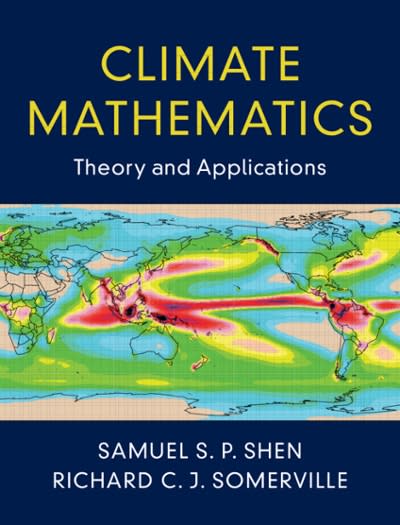Question
1) If Pr{X > x} = e 2x , what is the probability that X exceeds 1/2 ? (A) e 2 (B) 1/2 (C) e
1) If Pr{X > x} = e 2x , what is the probability that X exceeds 1/2 ?
(A) e 2 (B) 1/2 (C) e 1/2 (D) 1 e 2 (E) e 1
If you have a random sample X1, X2, . . . , Xn, with Pr{Xi > x} = e 2x , what is the probability that the sample minimum exceeds 1/2 ? (A) e 2 (B) (1/2)n (C) e n (D) 1 e n (E) e 2n
2) If a series is Y1 = 1, Y2 = 4, and Y3 = 9, what are the values of the two first differences? Y2 Y1 = ? Y3 Y2 =?
(A) 3 and 5 (B) 3 and 6 (C) 1 and 2 (D) 1 and 3 (E) 1 and 4
What is the value of the second difference, Y3 2Y2 + Y1 ? (A) 1 (B) 2 (C) 3 (D) 4 (E) 5 22.
3) In general, the second difference, that is, the difference of the first difference, is (A) YtYt1 (B) YtYt2 (C) Yt 2 Yt1+ Yt2 (D) YtYt1+ Yt2 (E) Yt+ 2Yt1+ Yt2.
4) If 2ax + b = 0, what is x in terms of a and b? (A) -b/a (B) -b/2a (C) -b/2 (D) -b (E) b/2a
5) Suppose that the COST ($) per unit as a function of the level x of input (for a suitable range of x) is Predicted COST per unit = 22 0.1x + 0.002x ^2.
What is the predicted COST per unit if x = 10 ? (A) $22 (B) $10 (C) $ 0.20 (D) $ 12 (E) $ 21.20 15.
6) What is x*, the optimal value of x, that is, the value that minimizes the value of predicted COST per unit?
(A) 22 (B) 10 (C) 25 (D) 12 (E) 12.20 units .
7). What is the corresponding minimum COST per unit ? (A) $22 (B) $10 (C) $0.20 (D) $ 2 (E) none of these
Step by Step Solution
There are 3 Steps involved in it
Step: 1

Get Instant Access to Expert-Tailored Solutions
See step-by-step solutions with expert insights and AI powered tools for academic success
Step: 2

Step: 3

Ace Your Homework with AI
Get the answers you need in no time with our AI-driven, step-by-step assistance
Get Started


